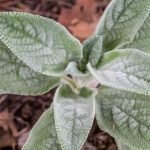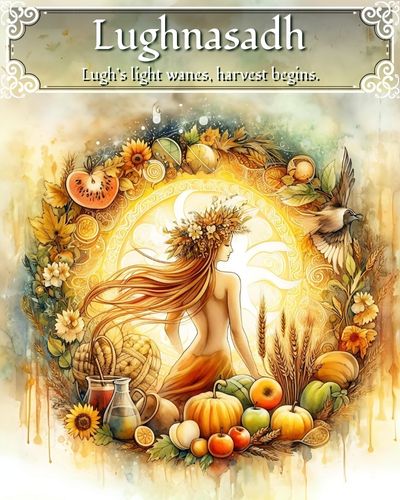
Approx. Reading time: About 10 Minutes

Introduction
Embracing Divine Prelude
As the Yule season gracefully approaches its zenith, the ninth day unfolds as a sacred interlude, inviting us to honor the benevolent presences of Njordr and Nerthus. It is a day suspended in the quiet before the New Year, a juncture where time seems to pause, allowing us to reflect on the kindness of Njordr and the earthbound harmony cherished by Nerthus. On this day, our focus shifts to a harmonious triad—our homes, hearts, and souls—beckoning us to tidy up the remnants of the passing year, creating space for the possibilities that the approaching dawn of the New Year promises. As the daylight wanes, a delectable tradition unfolds, for on this night, we embark on the creation of plum pudding, a sweet manifestation of shared joy and the hidden surprises that life and the divine have in store for us. Join us on this journey of reverence, preparation, and sweet anticipation as we celebrate the ninth day of Yule.

Tidings for the New Year with Njordr and Nerthus
The ninth day of Yule brings a dual celebration, honoring the benevolent Njordr and the nurturing Nerthus. Njordr, a god of the Vanir associated with the sea, wealth, and fertility, is revered for his kindness and willingness to share his blessings with other deities. In tandem, Nerthus, a Germanic goddess embodying fertility and peace, forms a divine pair with Njordr, reflecting the harmonious balance in nature.
Njordr: Yule’s Benevolent Maritime Deity
In the tapestry of Norse mythology, Njordr stands as a prominent figure among the Vanir, a divine family associated with fertility, wealth, and the sea. As the ninth day of Yule arrives, it brings with it a special acknowledgment of Njordr and his significance in the winter celebrations.
Njordr is often portrayed as the father of the deities Freyr and Freyja, born from the union with his unnamed sister. This association with sibling deities underlines the interconnectedness of nature, fertility, and familial bonds in Norse mythology. Njordr’s realm extends over the sea, seafaring, wind, fishing, and crop fertility, emphasizing his deep connection to the maritime aspects of life.
Unlike some of the more intense or warlike Norse deities, Njordr is characterized by a calm and content disposition. He is often depicted as a god who takes pleasure in whatever offerings are presented to him. This quality makes Njordr a deity of generosity, willing to share his blessings not only with other gods but also with those who seek his favor.
As Yule unfolds, the ninth day specifically honors Njordr, inviting practitioners to seek his kindness and prosperity. Mead, a traditional Nordic beverage, serves as a fitting offering for Njordr. In the absence of mead, a strong barley tea can stand in, symbolizing the essence of the harvest and the interconnectedness of the earth’s bounty.
To honor Njordr during Yule, practitioners can perform rituals expressing gratitude for the sea’s abundance and seeking his blessings for the coming year. Offerings of mead or barley tea can be presented with heartfelt prayers, acknowledging Njordr’s benevolence and requesting his continued favor.
For those seeking a deeper connection with Njordr, coastal meditations can be a powerful practice. By the shores, one can attune themselves to the rhythm of the sea, feeling the whisper of the wind and the pulse of life beneath the waves. This communion with the maritime elements aligns with Njordr’s domain, fostering a sense of harmony with the natural world.
As the ninth day of Yule unfolds, may the spirit of Njordr infuse your celebrations with kindness, contentment, and the generous bounty of the sea. In honoring Njordr, one not only pays homage to a god of prosperity but also embraces the interconnected web of life woven by the Vanir in the rich tapestry of Norse mythology.
Recipes
Nerthus: Earth’s Fertility Embodied in Yule Celebrations
In the vibrant mosaic of Germanic paganism, Nerthus emerges as a goddess intimately tied to the earth’s fertility and the sacred cycles of nature. As the ninth day of Yule dawns, the focus shifts to honoring Nerthus, invoking her blessings for peace, prosperity, and the abundance of the earth.
Nerthus, a revered figure in Germanic paganism, is hailed as a goddess associated with fertility, abundance, and the harmonious balance of nature. Her presence brings forth a sense of peace and prosperity, and she is often regarded as a guardian of the land, bestowing blessings wherever her image is venerated.
In the intricate web of Norse mythology, Nerthus is considered the mysterious and sacred counterpart to Njordr, the god associated with the sea and seafaring. The sibling relationship between Njordr and Nerthus establishes a divine pairing akin to other Vanir deities, such as Freyr and Freyja. Together, they form a cosmic balance, with Njordr overseeing maritime realms and Nerthus nurturing the fecundity of the earth.
To honor Nerthus during Yule, practitioners engage in rituals that pay homage to the earth’s abundance and seek her blessings for the coming year. Historically, Nerthus’s devotees offered various items into bogs, symbolic of the earth’s womb. Modern practices may involve leaving offerings near bodies of water, ensuring that the gifts are biodegradable and pose no harm to the environment.
A beautiful way to honor Nerthus is by crafting edible garlands for the birds and critters of the local ecosystem. Using ingredients like popcorn, cranberries, and other wildlife-friendly edibles, practitioners create a feast for the unseen dwellers of the woods. This activity not only symbolizes gratitude for the earth’s bounty but also serves as a harmonious offering to the wild spirits.
As a goddess deeply connected to the earth, Nerthus encourages practitioners to be environmentally conscious. Any offerings made in her name should reflect a deep respect for the sanctity of the land. Actions that enrich the soil, such as leaving fresh produce near bodies of water, demonstrate a commitment to the well-being of the earth and its creatures.
As the ninth day of Yule unfolds, may Nerthus’s presence infuse your celebrations with a profound connection to the earth and its fertility. In honoring Nerthus, one not only pays homage to a goddess of prosperity but also becomes a steward of the land, embodying the spirit of environmental consciousness and harmonious coexistence with the natural world.
Honoring Njordr and Nerthus: A Sacred Tapestry of Prosperity and Earthly Harmony
In the symphony of Yule celebrations, the ninth day beckons the spirits of Njordr and Nerthus, weaving a tapestry of blessings that intertwine the sea’s abundance with the earth’s fertility. To honor these revered deities is to embark on a journey of offerings and practices that resonate with their divine essence.
Njordr: Libations of the Sea and Land
Njordr, the god among the Vanir associated with the sea, seafaring, wind, fishing, and crop fertility, receives offerings that symbolize the richness of his realms. Mead, a beverage steeped in Norse tradition, is a fitting libation for Njordr, representing the fermented nectar associated with merriment and celebration. Alternatively, strong barley tea, with its earthy notes and grounding essence, pays homage to the fertility of the land over which Njordr holds sway.
Nerthus: Earthly Offerings for Peace and Prosperity
Conversely, Nerthus, the goddess of fertility and peace, finds her sanctuary in offerings deeply rooted in the earth’s bounty. Traditionally, her devotees made offerings in bogs, symbolizing the sacred womb of the earth. In contemporary practice, any body of water becomes a conduit for offerings. Fresh produce, symbolizing the gifts of the harvest, becomes a feast for Nerthus, nurturing the earth and its creatures. Cooked grain pottage, root vegetables, and the deep, rich tones of stout beer add layers to the banquet, enriching the earth and fostering a sense of harmony.
Crafting a Banquet for the Divine: Earth-Centric Practices
Crafting offerings for Njordr and Nerthus is a sacred act that involves mindfulness and intention. Fresh produce, locally sourced and in-season, becomes a vibrant offering that not only honors the deities but also contributes to sustainable practices. The act of cooking grain pottage infuses the offerings with the essence of hearth and home, linking the divine banquet to the heart of earthly existence.
An Eco-Conscious Connection: Harmonizing with Nature
As custodians of the earth, practitioners engaging in these offerings align themselves with eco-conscious principles. Ensuring that the offerings are biodegradable and leave no ecological footprint reflects a commitment to the sanctity of the land. The act of giving back to the earth becomes a reciprocal exchange, a dance of gratitude and harmony.
As the offerings are laid at the threshold of Njordr and Nerthus, may their blessings permeate your Yule celebrations. Libations of mead or barley tea and a banquet of earth’s treasures become not only a feast for the divine but a pledge to nurture and protect the delicate balance between sea and soil. In honoring Njordr and Nerthus, we become stewards of prosperity and earthly harmony, custodians of a sacred covenant between humanity and the natural world.
Tidying Up for the New Year: A Holistic Cleansing of Home and Spirit
In the waning days of the year, the ninth day of Yule unfolds as a sacred opportunity to bid farewell to the old and usher in the new. It beckons individuals to embark on a transformative journey, not just within the physical confines of their homes but also in the depths of their spirits. This day serves as a canvas upon which the brushstrokes of renewal and readiness for the coming year are painted.
Physical Purification: Clearing the Canvas of Home
The act of physically tidying up the home is akin to a ceremonial cleanse, a ritualistic shedding of the vestiges of the past year. Dust off the remnants of the past by settling outstanding bills, symbolically closing chapters and welcoming financial stability into the new year. Navigate through closets with intention, allowing the act of organizing to become a metaphor for sorting through the clutter of one’s life.
The act of donating unnecessary items takes on a profound significance, transcending the material realm. It becomes a gesture of release, a conscious decision to part with the old and make space for the new. As each item finds a new home, the home itself undergoes a metamorphosis, shedding the weight of the past and embracing the lightness of possibilities.
Spiritual Sanctity: Embracing Change Within
However, the cleansing isn’t confined to the physical realm alone. The spiritual sanctity of the home is equally vital. As calendars are unfurled to mark the canvas of the new year, each entry becomes a sacred promise to embrace change. Important events etched on these pages become beacons, guiding the journey through the uncharted territories of the future.
In this spiritual cleansing, one can engage in practices that resonate with their beliefs. Light candles to symbolize the dispelling of darkness or burn sage to purify the energy within. The home, now physically and spiritually cleansed, becomes a sanctum where the upcoming year can unfurl its wings.
Creating Space for the New: An Act of Manifestation
Creating space for the new is not just a physical act but an act of manifestation. By tidying up, both materially and spiritually, one sets the stage for the grand performance of the coming year. It becomes a declaration to the universe that the canvas is ready, the brushes are poised, and the strokes of destiny are awaited.
As the last echoes of the old year fade away, the home stands as a testament to resilience and readiness. The ninth day of Yule, with its call for tidying up, transforms into a sacred ritual, a dance between the tangible and the intangible, culminating in a harmonious symphony of renewal.
Plum Pudding Tradition: A Sweet Offering with Hidden Blessings
As the sun dips below the horizon on the ninth day of Yule, the air is filled with the sweet anticipation of a cherished tradition — the creation of plum pudding. This delectable dessert transcends the boundaries of mere culinary delight; it becomes a sacred act, a communion of flavors and blessings woven into the very fabric of the festive season.
The process begins with the careful selection of ingredients, each bearing its own significance. The plump, succulent plums symbolize abundance and prosperity, their rich sweetness echoing the blessings sought for the coming year. The flour, a humble staple, represents the foundation upon which these blessings can manifest, grounding the pudding in the essence of the earthly realm.
Yet, the true magic lies in a hidden treasure — a silver coin blessed in the names of Njordr and Nerthus. As the coin is carefully tucked within the folds of the pudding mixture, it transforms the dessert into a vessel of hidden blessings. This ancient tradition harks back to a time when such offerings were not only culinary delights but also conduits of divine favor.
As the plum pudding is served and eagerly enjoyed, the moment of revelation arrives. The fortunate soul who discovers the hidden coin in their portion is bestowed with a special blessing of wealth for the approaching year. This act transcends the boundaries of mere culinary enjoyment; it becomes a symbol of unexpected fortune, a tangible manifestation of the divine benevolence invoked through Njordr and Nerthus.
Amidst the joyous revelry, it’s essential to set aside a portion of the plum pudding as an offering to Njordr and Nerthus. This act of gratitude is not just a token gesture but a profound acknowledgment of the divine forces that have been invoked during the Yule season. The essence of the pudding, now infused with the shared joy of discovery and the hidden blessings of the silver coin, becomes a sacred offering to the deities associated with sea, fertility, and the earth.
As friends and family gather around to share in the plum pudding, each spoonful becomes a communion of flavors and blessings. The shared discovery of the coin fosters a sense of unity, as every participant becomes a bearer of the hidden wealth and a witness to the divine harmony that permeates this sweet tradition.
A Tapestry of Sweet Blessings Unveiled
In the enchanting twilight of the ninth day of Yule, as the velvety aroma of plum pudding dances in the air and laughter weaves through the shared moments, the hidden blessings within each spoonful unfurl like a tapestry of sweet enchantment. The mingling flavors, infused with the sacred touch of a silver coin blessed in the names of Njordr and Nerthus, resonate with the promise of a bountiful new year.
As the ninth day of Yule unfolds, may the blessings of Njordr and Nerthus linger in the corners of your home, bringing prosperity, harmony, and the sweet melody of a fresh start in the coming year. With each shared indulgence in the plum pudding, may the hidden treasures within it symbolize not only the wealth that awaits but also the unity and joy that blossoms when hearts are touched by the divine magic of the season.
















I love learning more about yule and i am already cleaning and donating, trying to focus on culling out unneeded things this new year 🙂